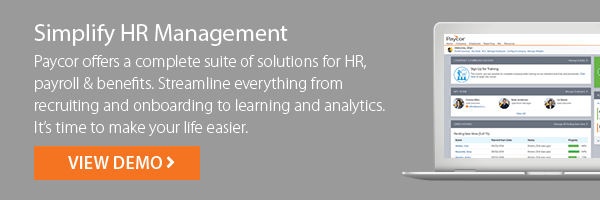HRMS is a powerful system that supports Human Resources departments by minimizing time-consuming tasks through software and automation.
HRMS stands for Human Resources Management System. In the digital era, a HRMS has become an essential component of any modern HR department. The amount of work that goes into recruiting, hiring and cultivating employees is simply too extensive to be handled manually by most businesses.
In this article, we’ll define the basics of a HRMS, how to determine your company’s HRMS needs, and the most important HRMS features for your HR department.
The Difference Between HRIS, HRMS and HCM
Before we dive deeper, we know the world of HR acronyms can be confusing, so let’s level-set on common HR acronyms.
There are three commonly interchanged acronyms in human resources software. In order of least to most robust, they are HRIS, HCM and HRMS.
HRIS or Human Resources Information System is a type of HRMS. It typically has the least amount of features of any HR system. In a HRIS you can expect:
- Recruiting features
- Applicant tracking systems (ATS)
- Payroll processing
- Workflow automation
- Benefits administration
- Data and reporting
HCM refers to Human Capital Management. It is a broad term that can often encompass a variety of different HR technologies. A HCM usually includes everything of a HRIS and:
- Performance tracking
- Salary solutions and technology
- Automated onboarding features
- Deep analytics on employee performance
HRMS is the most fully featured system for HR departments. It typically includes:
- Everything in HRIS and HCM
- Labor Management or TLM
- Productivity and profitability features
- Payroll processing features
Additionally, other human resource software acronyms to take note of include Applicant Tracking System (ATS), Learning Management System (LMS), and Talent Acquisition System (TAS).
How is a HRMS Different from Other HR Tools
A HRMS can be thought of as the main system that a modern HR department relies upon. Within a HRMS there are systems such as HRIS, payroll, applicant tracking (ATS), benefits administration and learning management.
Some companies choose to implement one HRMS to manage all the systems mentioned above. An all-in-one HRMS has the benefit of simplicity and centrality. On the other hand, some companies choose to use several distinct systems, which allows for more customization and specialization.
Should You Be Using a HRMS
The world of HR has been dramatically changed with the explosion of online technology. Even companies with just a few employees must deal with job boards, online postings, candidate and employee management.
For the vast majority of companies, a HRMS is necessary. The complexities of finding and hiring quality candidates today requires nearly full-time management. A HRMS makes those HR tasks manageable and flexible as a company grows.
Benefits of a HRMS
A HRMS is a broad set of systems that make life easier for HR team members. To understand exactly how a HRMS makes an impact, here are a few use cases.
Employee Self-Management
A key benefit of a HRMS is the ability to put certain HR tasks in the hands of employees. For example, when an employee has a change of address, a HRMS can allow that employee to self-edit their profile information. While this may seem like a small task, when multiplied across an organization, the time saved can be massive for HR teams.
Safeguard Security for HR
Another feature of a HRMS is built-in security. Online security is a non-negotiable requirement today. For HR departments, managing candidate and employee records means security policies and protocol must be followed. With technology advancing daily, HR departments need to be compliant at all times. A HRMS comes with built-in security already in place, saving time and ensuring ongoing privacy.
Optimized Employee Onboarding
A HRMS can also make the onboarding process much more consistent and valuable. When new employees join a company it is both exciting and time-consuming. Other team members are often pulled in to help train new hires, which can slow down a department’s productivity. A HRMS with a learning management system (LMS) can help. By collecting all of a companies key training documents and turning them into learning modules, the onboarding process becomes more efficient. Plus, a clear and organized onboarding experience leaves a better first impression for new employees.
As you can already see, a HRMS offers extensive benefits to a company from saving valuable time to improving company culture.
How to Choose a HRMS
When choosing a new Human Resources technology it is crucial to start with clear requirements. This means first establishing a group of stakeholders and decision makers that will work with or benefit from the HRMS system. This focus group should spend time outlining all the current challenges of your HR operations. Also, remember to solicit employee feedback that would improve their work experience.
Once requirements for the ideal HRMS are set, then a company can move to reviewing different systems. Note, It can be tempting to move to this phase too quickly. However, without establishing the HRMS needs first, organizations can make the mistake of choosing a technology that misses the mark for their actual use case.
When exploring HRMS solutions, take advantage of free product demos. Often a HCM or HRMS software provider will lead personalized demos tailored to your company’s unique HR needs. Be sure to include important decision-makers in the product demo process, so everyone feels comfortable when it comes to commitment time.
Focus On Quality From Recruitment Through Employment
Human resources software and technology can be an overwhelming topic for HR teams. The key is to focus on the ultimate goal which is providing a quality experience for employees from the recruiting phase through long-term employment.

Previous:
What are People Analytics?



